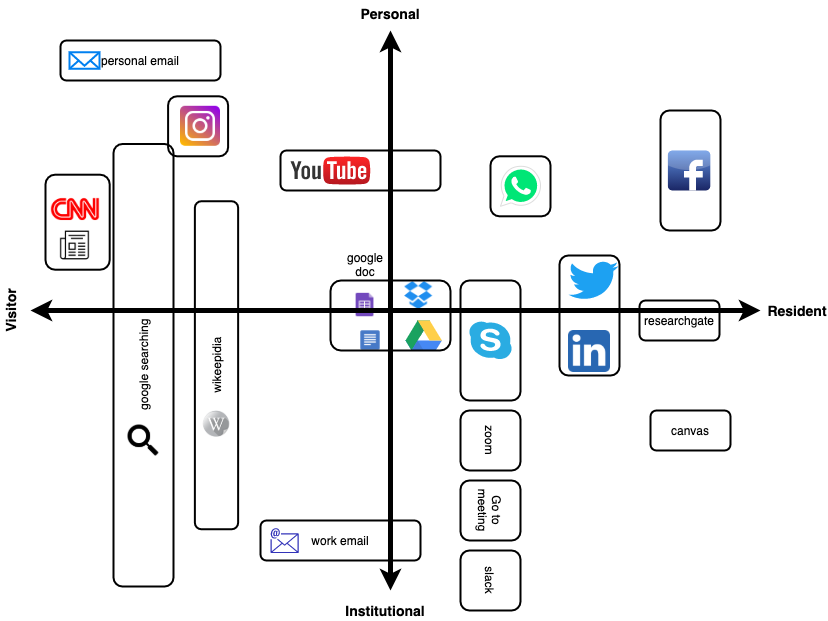The title might confuse you but not for long if I say I am going to write about the Digital Visitor & Resident (VR) model introduced in a webinar by David White. In contrast to Marc Pensky’s model that is based on generational distinction or digital technology skill distinction, this model captures users motivation in online engagements. So, basically this model doesn’t permanently label one as a digital native or a digital immigrant, instead it qualifies ones digital engagement.
VR model presents a continuum between two modes of online engagement. Sliding between the modes the model can capture an individual’s motivation to use the web in different contexts. One side of the continuum is ‘visitor’ mode, here the web is assumed as a toolbox. One looks for a tool to perform a task and once the task is done the box is closed, no social traces are left. In visitor mode one might be doing googling, reading wikipedia or doing online shopping. These engagements are not visible to other users.
Other side of the continuum is ‘resident’ mode, here the web is assumed as a place where people can coexist (with digital identity). In this mode, the main motivation to go online is to engage with others. Being active in social media, joining online discussions, commenting on youtube videos, these are all example scenarios depicting individuals in the resident mode. These types of online behaviors leave social traces. The figure below shows one example of VR model that captures an individual’s online behavior. In the extreme end of the resident mode, visibility is quite high – individual’s online engagement could appear in google searches. The vertical axis adds two common contexts where people engage online – personal and institutional. So, the same person engages online in a mixture of visitor and resident modes depending on what he or she is trying to achieve – our Dr. Visitor and Mr. Resident as the central character in Strange Case of Dr. Jekyll and Mr. Hide.
